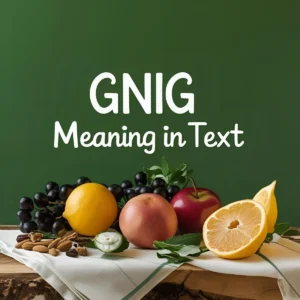- In digital communication, “OPT” is a term you might encounter in marketing emails, group chats, or even gaming. But what does it really mean, and how is it used in everyday texting?
This guide breaks down:
✔ The true meaning of “OPT” (and when people actually use it)
✔ Real-world examples (not awkward, forced ones)
✔ Professional vs. casual usage (spoiler: it’s mostly formal)
✔ How to respond naturally (no cringe replies)
✔ Scam alerts & safety tips (don’t get tricked by fake “OPT-in” texts)
What Does “OPT” Mean?
“OPT” comes from “opt-in” or “opt-out”—meaning to choose to participate (in) or decline (out).
Primary Meanings:
- Opt-in = Agree to join (e.g., “Reply YES to OPT-in for alerts.”)
- Opt-out = Choose to leave (e.g., “Text STOP to OPT-out.”)
- Rare: “Option” (in gaming, but most say “pick” or “select”)
Where You’ll See “OPT”
✅ Marketing texts (e.g., “OPT-in for discounts!”)
✅ Email footers (e.g., “Click here to OPT-out.”)
❌ Casual texting? Almost never. (People say “I’m in” or “count me out.”)
Real-World Examples (No Forced Slang)
1. Marketing / Professional Use
📧 Email: “You’re subscribed! [OPT-out] here.”
📱 SMS Alert: “Text JOIN to OPT-in for updates.”
2. Group Chats (Rare, But Possible)
👥 “We’re doing a BBQ. OPT-in if you’re coming!”
(More natural: “Who’s in for BBQ?”)
3. Gaming (Uncommon)
🎮 “OPT for sniper or tank.”
(Better: “Pick sniper or tank.”)
How to Respond Naturally
If Someone Says “OPT-in”
- Casual: “I’m in!” / “Count me out.”
- Professional: “I’ll opt-in, thanks.”
Avoid Cringe Replies Like:
❌ “OPT me in, fam!” (Nobody talks like this.)
✅ “Sure, I’ll join.” (Normal.)
Is “OPT” Used Globally?
🌎 U.S./U.K./Canada: Mostly in marketing (not slang).
🇦🇺 Australia: They say “keen” or “nah, I’m out.”
🇪🇸 Spanish: “Inscribirse” (sign up) / “Cancelar” (opt-out).
⚠ Non-English speakers may not recognize “OPT” unless familiar with digital terms.
“OPT” vs. Similar Terms
| Term | Best Used For | Example |
|---|---|---|
| OPT-in/out | Marketing, subscriptions | “OPT-out of emails.” |
| Join/Leave | Casual groups | “Join the chat.” |
| Sign up/Unsubscribe | Formal registrations | “Sign up for the event.” |
Key Takeaway:
- Use “OPT” for automated systems (text alerts, emails).
- Use “join/leave” for casual plans.
Scam Warning: Fake “OPT-in” Texts
🚨 Fraudsters send: “OPT-in to claim your prize!” (Then steal your info.)
✅ Stay safe:
✔ Never OPT-in to unknown numbers.
✔ Check official sender details.
✔ Use block/report spam.
Final Verdict: Should You Use “OPT”?
✔ Yes, in marketing/professional settings.
❌ No, in casual chats (use “I’m in” instead).
Conclusion
Understanding OPT in text is key to navigating modern conversations, from group chats to professional emails. Whether it’s opting into a fun event, choosing a gaming role, or subscribing to updates, OPT is a versatile term that reflects choice. Its roots in marketing have evolved into casual, digital slang, making it a staple in texting, social media, and beyond. By grasping its meanings, contexts, and response styles, you can use OPT confidently and avoid misunderstandings. Next time you see “OPT in,” you’ll know exactly what to say—whether it’s a witty reply or a polite decline. Stay sharp, and keep decoding the language of the digital age!



Pingback: IGL Meaning in Text: Your Ultimate Guide to This Cool Acronym 🎮✌️